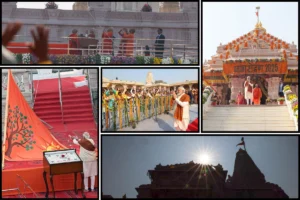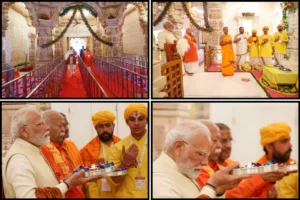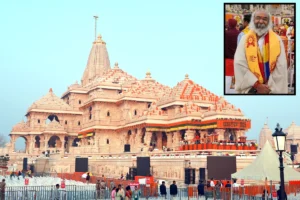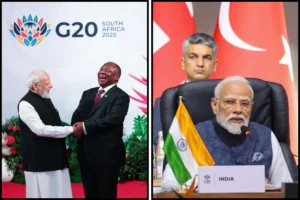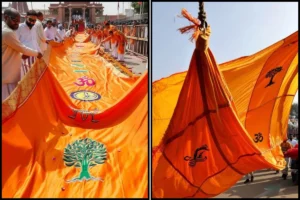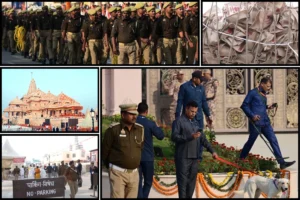
Prime Minister Modi and President Macron explored Jaipur’s Jantar Mantar, a renowned solar observatory founded by Maharaja Sawai Jai Singh, today.
Recognized as a World Heritage Site since July 2010 by UNESCO, Jantar Mantar stands as a remarkable showcase of India’s scientific advancements centuries before gaining independence. Boasting eighteen instruments, it holds the distinction of being the world’s largest stone observatory.
Key instruments at Jantar Mantar include:
Laghu Samrat Yantra (Sun Dial)
- Enables the calibration of local time with an accuracy of 20 seconds.
Triangular Wall
- Positioned in the north-south direction with quadrants on both sides.
- The wall’s shadow moves equal distances at regular intervals on the quadrants, calibrated to indicate local time.
- Western and eastern quadrants are subdivided into six-hour segments for morning and afternoon, with each hour further divided into four fifteen-minute divisions, followed by sub-divisions into five-minute and one-minute intervals, each one-minute split into three divisions of 20 seconds.
Sun Dial
- Determines the Sun’s position in the hemispheres.
- Comprises two parts, one depicting the Sun in the northern hemisphere (March to September) and the other in the southern hemisphere (September to March).
- The shadow of the iron rod (gnomon) reflects the local time of Jaipur city.
Rashivalaya
- Instruments for measuring celestial latitude and longitude.
- Twelve instruments represent the zodiac signs, and measurements are taken when the corresponding zodiac sign transits the local meridian.
- Instruments are strategically placed based on the angular position of the Sun in the Northern and Southern hemispheres.
Largest Sun Dial
- Showcases local time with a precision of two seconds.
Middle Wall
- Placed in the north-south direction at an angle of the local latitude (27º N).
- The wall’s shadow moves equal distances at regular intervals on the eastern and western quadrants, calibrated to indicate local time.
- Western and eastern quadrants are divided into six-hour segments, with each hour further divided into 15-minute and 1-minute intervals.
To read more such news, download Bharat Express news apps








